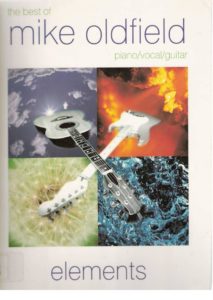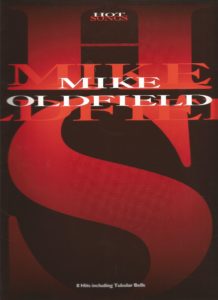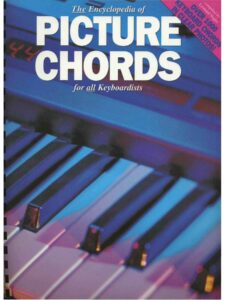Table of Contents
Come join us now, and enjoy playing your beloved music and browse through great scores of every level and styles!
Can’t find the songbook you’re looking for? Please, email us at: sheetmusiclibrarypdf@gmail.com We’d like to help you!
Happy birthday, Mike Oldfield, born on this day in 1953

Best Sheet Music download from our Library.

Please, subscribe to our Library.
If you are already a subscriber, please, check our NEW SCORES’ page every month for new sheet music. THANK YOU!

MIKE OLDFIELD Tubular Bells Intro sheet music, Noten, partitura, spartiti, partition, 楽譜
Mike Oldfield: A Comprehensive Exploration of His Life, Music, and Legacy
Mike Oldfield is a British multi-instrumentalist, composer, and producer best known for his groundbreaking 1973 album Tubular Bells, which launched him to international fame. His unique blend of progressive rock, folk, classical, and electronic music has made him one of the most innovative musicians of the 20th and 21st centuries. This article delves into his biography, musical style, influences, legacy, discography, filmography, and more, providing an in-depth look at his extraordinary career.
Browse in the Library:
Or browse in the categories menus & download the Library Catalog PDF:
Biography
Early Life (1953–1970)
Michael Gordon Oldfield was born on May 15, 1953, in Reading, Berkshire, England. He grew up in a musical family—his mother Maureen was a nurse and his father Raymond a doctor, but both had an appreciation for music. Oldfield learned to play the guitar at an early age and was heavily influenced by folk and classical music. By his teens, he was already an accomplished musician, playing in various bands, including The Sallyangie with his sister Sally.

Breakthrough with Tubular Bells (1971–1975)
In 1971, Oldfield recorded a demo that would become Tubular Bells. After being rejected by several labels, Richard Branson’s newly formed Virgin Records signed him. Released in 1973, Tubular Bells was a monumental success, selling millions of copies and becoming the inaugural release of Virgin Records. The album’s Part One was famously used in the horror film The Exorcist (1973), further boosting its popularity.
Progressive and Experimental Period (1976–1990)
Oldfield continued to release ambitious albums, including:
- Hergest Ridge (1974)
- Ommadawn (1975)
- Incantations (1978)
- Platinum (1979)
- QE2 (1980)
- Five Miles Out (1982)
- Crises (1983) – featuring the hit single “Moonlight Shadow” with Maggie Reilly
- The Killing Fields (1984) – soundtrack for the film
- Islands (1987)
During this period, Oldfield experimented with progressive rock, world music, and electronic elements, solidifying his reputation as a genre-defying artist.
Electronic and Pop Shift (1990–2003)
In the 1990s, Oldfield embraced electronic dance music (EDM), releasing:
- Amarok (1990) – a complex, one-hour-long piece
- Heaven’s Open (1991)
- Tubular Bells II (1992) – a modern reimagining of his debut
- The Songs of Distant Earth (1994) – inspired by Arthur C. Clarke’s sci-fi novel
- Voyager (1996) – Celtic-inspired
- Tubular Bells III (1998) – electronic-oriented
- Guitars (1999) – entirely guitar-based
- The Millennium Bell (1999) – orchestral
Later Works and Retirement (2004–Present)
Oldfield released:
- Light + Shade (2005) – ambient and electronic
- Music of the Spheres (2008) – classical crossover
- Man on the Rocks (2014) – rock/pop-oriented
In 2017, he announced his retirement from touring, though he occasionally releases new music. He remains an influential figure in progressive and electronic music.

Musical Style
Genre Fusion
Oldfield’s music blends:
- Progressive rock (Tubular Bells, Ommadawn)
- Folk (Hergest Ridge, Voyager)
- Classical (Music of the Spheres)
- Electronic/Ambient (The Songs of Distant Earth)
- Pop/Rock (“Moonlight Shadow,” “Family Man”)
Guitar Techniques and Licks
Oldfield is renowned for his fingerpicking and layered guitar work. Some signature techniques include:
- Alternate tunings (e.g., DADGAD in “Ommadawn”)
- Fast arpeggios and harmonics (“Tubular Bells Part One”)
- Multi-track recording – playing all instruments himself
Harmonic and Structural Complexity
His compositions often feature:
- Modal interchange (mixing major and minor modes)
- Extended instrumental passages (e.g., “Amarok”)
- Polyrhythms and odd time signatures
Influences
Oldfield has cited:
- Classical: Beethoven, Sibelius, Vaughan Williams
- Folk: Bert Jansch, John Renbourn
- Rock: Jimi Hendrix, Pink Floyd
- Electronic: Jean-Michel Jarre, Tangerine Dream
Legacy
- Pioneered progressive rock and new age music
- Influenced artists like Steven Wilson (Porcupine Tree), Jean-Michel Jarre, and Vangelis
- His multi-instrumental recording techniques inspired home producers
- Tubular Bells remains a landmark in album-oriented rock
Discography (Selected Albums)
- Tubular Bells (1973)
- Hergest Ridge (1974)
- Ommadawn (1975)
- Incantations (1978)
- Platinum (1979)
- QE2 (1980)
- Five Miles Out (1982)
- Crises (1983)
- The Killing Fields (1984)
- Islands (1987)
- Amarok (1990)
- Tubular Bells II (1992)
- The Songs of Distant Earth (1994)
- Voyager (1996)
- Tubular Bells III (1998)
- Music of the Spheres (2008)
- Man on the Rocks (2014)
Filmography
- The Exorcist (1973) – Tubular Bells featured
- The Killing Fields (1984) – Original soundtrack
- The Space Movie (1980) – Music contributions
- Tubular Bells: The Mike Oldfield Story (2013) – Documentary
Documentaries and Key Videos
Documentaries
- Mike Oldfield: Tubular Bells (BBC, 2013)
- The Making of Tubular Bells
Iconic Compositions
- Tubular Bells (Part One)
- Moonlight Shadow
- Ommadawn (Part One)
- Five Miles Out
Mike Oldfield remains one of music’s most innovative and versatile composers. From Tubular Bells to his electronic experiments, his work has transcended genres and generations. His influence on progressive rock, ambient, and electronic music is undeniable, and his legacy continues to inspire musicians worldwide.
Tubular Bells: A Deep Dive into Mike Oldfield’s Masterpiece
Mike Oldfield’s Tubular Bells (1973) is one of the most groundbreaking albums in progressive and instrumental rock history. Composed and recorded when Oldfield was just 19 years old, the album is a multi-layered, multi-instrumental epic that defied conventional music structures. This section explores its musical style, harmony, structure, instrumentation, and legacy.
Musical Style and Genre
Tubular Bells is a fusion of:
- Progressive Rock (extended compositions, complex arrangements)
- Classical Minimalism (repetitive motifs with gradual evolution)
- Folk (acoustic guitar passages, Celtic influences)
- Ambient & Experimental (layered textures, unconventional instruments)
Unlike traditional rock albums, Tubular Bells is structured as two continuous, side-long tracks (Part One: 25:30, Part Two: 23:20), resembling a symphonic suite rather than a collection of songs.
Harmonic and Structural Analysis
Part One (Key Sections)
- Opening Piano Theme (A Minor)
- A hypnotic, repeating A-C-E-F motif (later reprised in different keys).
- Establishes a modal, almost medieval atmosphere.
- Acoustic Guitar Arpeggios
- Fingerpicked in DADGAD tuning (a folk-inspired approach).
- Layered with glockenspiel and mandolin for a textural, cascading effect.
- “Caveman” Section
- A driving, distorted bassline in E minor, foreshadowing progressive metal.
- Features odd-meter grooves (shifting between 7/8 and 4/4).
- “Piltdown Man” & “Bagpipe Guitars”
- A mock-serious narration introduces instruments one by one.
- Oldfield plays multiple guitars with extreme effects (e.g., “bagpipe” emulation).
- Finale (Tubular Bells Theme)
- The iconic A-minor to G-major shift (a simple but powerful resolution).
- The actual tubular bells (a rare orchestral instrument in rock) make their debut.
Part Two (Key Sections)
- “Harmonic Labyrinth” Intro
- Sustained organ chords with phasing effects (inspired by Steve Reich).
- “Sailor’s Hornpipe” (Traditional Folk Tune)
- Played on distorted electric guitar, blending folk and rock.
- “The Viv Stanshall Section”
- A surreal spoken-word interlude by Bonzo Dog Doo-Dah Band’s Viv Stanshall.
- “The Final Reel”
- A fast-paced, Celtic-inspired jig with mandolin and layered guitars.
Key Harmonic Techniques
- Modal Interchange: Shifts between A minor, G major, and D Dorian create a floating, timeless feel.
- Ostinato Patterns: Repetitive basslines and arpeggios build tension (e.g., the opening piano).
- Polyrhythms: Overlapping 3/4 and 4/4 sections add complexity.
- Layered Counterpoint: Multiple guitar lines interweave like a Baroque fugue.
Instrumentation & Recording Techniques
Oldfield played over 20 instruments himself, including:
- Guitars (acoustic, electric, bass, “bagpipe” guitar)
- Keyboards (piano, Farfisa organ, Hammond organ)
- Percussion (glockenspiel, tubular bells, timpani)
- Strings (mandolin, violin)
- Vocals (wordless choirs, grunts)
Innovative Production
- Multi-Tracking: Oldfield recorded each instrument separately, layering them meticulously.
- Tape Loops & Phasing: Used manual tape-splicing for delays and stereo effects.
- Dynamic Range: From whisper-quiet acoustic passages to thundering climaxes.
Influences on Tubular Bells
- Steve Reich (Phase Music) → Repetitive minimalism.
- Pink Floyd (Echoes) → Extended instrumental passages.
- Medieval & Folk Music → Modal harmonies, acoustic textures.
- Prog Rock (Yes, King Crimson) → Virtuosic musicianship.
Legacy & Cultural Impact
- Launched Virgin Records: Richard Branson’s label was built on its success.
- Soundtrack to The Exorcist (1973) → Made the album a horror classic.
- Pioneered New Age & Ambient Music: Inspired Jean-Michel Jarre, Vangelis.
- Influenced Prog & Post-Rock: Bands like Porcupine Tree, Mogwai, and Sigur Rós cite it as an influence.
Notable Performances & Re-recordings
- Tubular Bells II (1992) – A reimagined version with digital production.
- Tubular Bells III (1998) – Electronic/trance-influenced take.
- Live at BBC (1973) – Oldfield’s rare TV performance.
- Tubular Bells 2003 – A remastered 30th-anniversary edition.
Where to Listen & Watch
- Full Album (1973 Original) → YouTube Link
- The Making of Tubular Bells → Documentary
- Live at Montreux (1981) → Performance
Tubular Bells is a masterpiece of composition, production, and innovation. Its blend of rock, folk, and classical minimalism set a new standard for instrumental music. Even 50+ years later, it remains a timeless, hypnotic journey—a testament to Mike Oldfield’s genius.
